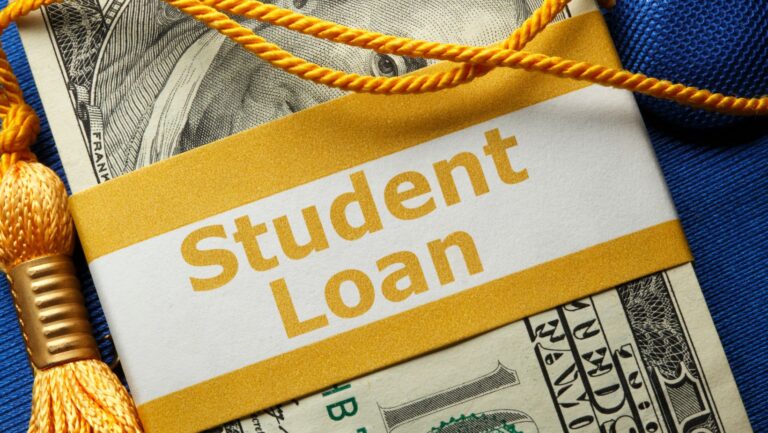Key Takeaways:
- Lower interest rates and monthly payments are the main benefits of refinancing private student loans.
- Refinancing offers flexible repayment options that align with your financial situation and goals.
- By refinancing, you have the potential to save thousands of dollars over the life of your loan.
- Assess your current student loan situation and understand the eligibility criteria before deciding to refinance.
- Weigh the pros and cons of refinancing, considering benefits and potential drawbacks.
- Gather necessary documentation, research and compare lenders, and complete the refinancing process.
- Improve your credit score and seek assistance from loan professionals to increase your chances of securing better terms and rates.
- Review and understand the fine print of the loan agreement before finalizing the refinancing process.
Are you tired of high interest rates and monthly payments on your private student loans? Do you want to find a way to save thousands of dollars and have more flexibility in your repayment options? If so, refinancing your private student loans may be the solution you’ve been looking for. In this comprehensive guide, we will explore the benefits of refinancing, how to determine if it’s right for you, the process of refinancing, and offer tips for successfully refinancing your private student loans.
The Benefits of Refinancing Private Student Loans
1.1 Lower Interest Rates and Monthly Payments
One of the main benefits of private student loan refinancing is the opportunity to secure a lower interest rate and reduce your monthly payments. When you initially took out your loans, you may have had a limited credit history, resulting in higher interest rates.
However, if you have established a strong credit profile since then, you may qualify for a lower interest rate when refinancing. A lower interest rate can save you a significant amount of money over the life of your loan, and reducing your monthly payments can free up funds for other financial goals.
1.2 Flexible Repayment Options
In addition to lower interest rates and monthly payments, refinancing your private student loans can also provide you with more flexible repayment options. When refinancing, you can choose a new repayment term that better aligns with your financial situation and goals. For example, if you are currently struggling to make your payments, you could opt for a longer repayment term to lower your monthly payments. On the other hand, if you want to pay off your loans faster and save on interest, you can choose a shorter repayment term. The ability to customize your repayment plan can give you greater control over your finances.
1.3 Potential to Save Thousands of Dollars
By securing a lower interest rate and reducing your monthly payments through refinancing, you have the potential to save thousands of dollars over the life of your loan. The exact amount of savings will depend on various factors, such as the remaining balance on your loan, the new interest rate, and the length of the repayment term you choose. However, even if the savings seem relatively small on a monthly basis, they can add up significantly over time. By refinancing, you can free up money that can be used for other financial goals, such as saving for a down payment on a home or investing for your future.
How to Determine if Refinancing is Right for You
2.1 Assessing Your Current Student Loan Situation
Before deciding whether to refinance your private student loans, it’s essential to assess your current loan situation. Start by gathering all the necessary information, including the current balance, interest rate, and monthly payment of each loan. Take a close look at your budget and determine how your current payments fit into your overall financial picture.
If your current payments are causing financial strain or preventing you from achieving your other financial goals, refinancing may be a viable option.
2.2 Understanding the Eligibility Criteria
When considering refinancing, it’s important to familiarize yourself with the eligibility criteria set by lenders. Each lender may have slightly different requirements, but common factors that lenders consider include your credit score, income, and employment history. Lenders typically prefer to work with borrowers who have a strong credit history and stable income. If you meet the eligibility criteria, you have a higher chance of qualifying for better terms and rates.
2.3 Weighing the Pros and Cons
Before making a decision, carefully weigh the pros and cons of refinancing your private student loans. Consider the benefits we discussed earlier, such as lower interest rates and flexible repayment options. However, also be aware of potential drawbacks, such as losing certain borrower benefits, such as loan forgiveness programs or flexible repayment options offered by your current loan servicer.
Additionally, refinancing federal student loans into private loans means the loss of federal protections and repayment options. It’s crucial to evaluate the overall impact and determine if the benefits outweigh any potential disadvantages.
The Process of Refinancing Private Student Loans
3.1 Gathering All Necessary Documentation
Once you have decided to refinance your private student loans, the first step is to gather all the necessary documentation. Typical documents required by lenders include proof of income, employment verification, identification, and loan statements. Make sure to have all the documents organized and readily available to streamline the application process.
3.2 Researching and Comparing Lenders
After gathering your documentation, it’s time to research and compare lenders. Start by looking for lenders who specialize in student loan refinancing. Many online platforms allow you to compare rates and terms from multiple lenders, making it easier to find the best deal. Consider factors such as interest rates, repayment terms, customer reviews, and any additional borrower benefits offered by each lender. By conducting thorough research, you can feel confident that you are choosing the best option for your financial situation.
3.3 Applying and Completing the Refinancing Process
Once you have chosen a lender, it’s time to complete the refinancing process by submitting your application. The application will require you to provide all the necessary information and documentation. After submitting your application, the lender will review it and determine if you meet their criteria. If approved, you will receive a loan offer outlining the terms and conditions. Carefully review the offer to ensure it aligns with your goals and financial situation. If you are satisfied, accept the offer and follow the lender’s instructions to finalize the refinancing process.
Tips for Successfully Refinancing Private Student Loans
4.1 Improving Your Credit Score
If you want to increase your chances of qualifying for better terms and rates when refinancing your private student loans, focus on improving your credit score. Start by reviewing your credit report and identifying any errors or areas for improvement. Make sure to make all your bill payments on time and keep your credit utilization ratio low. Additionally, avoid applying for new credit shortly before or during the refinancing process, as this can negatively impact your credit score.
4.2 Seeking Assistance from Loan Professionals
Refinancing your private student loans is a significant financial decision that may require professional guidance. Consider seeking assistance from loan professionals who specialize in student loan refinancing.
They can provide insights, answer your questions, and help you navigate the refinancing process. Loan professionals can also negotiate with lenders on your behalf and potentially secure better terms and rates.
4.3 Analyzing and Understanding the Fine Print
Before finalizing the refinancing process, take the time to review and understand the fine print of the loan agreement. Pay close attention to details such as interest rates, repayment terms, late payment policies, and any fees or penalties associated with the loan. If anything is unclear, don’t hesitate to ask questions and seek clarification from the lender. Understanding the terms of the loan will ensure that you are making an informed decision that aligns with your financial goals.
Refinancing your private student loans can provide you with numerous benefits, including lower interest rates, flexible repayment options, and potential savings. However, it’s essential to carefully assess your current loan situation, understand the eligibility criteria, and weigh the pros and cons before deciding to refinance. By following the refinancing process and implementing the tips provided, you can successfully refinance your private student loans and achieve greater financial freedom.





